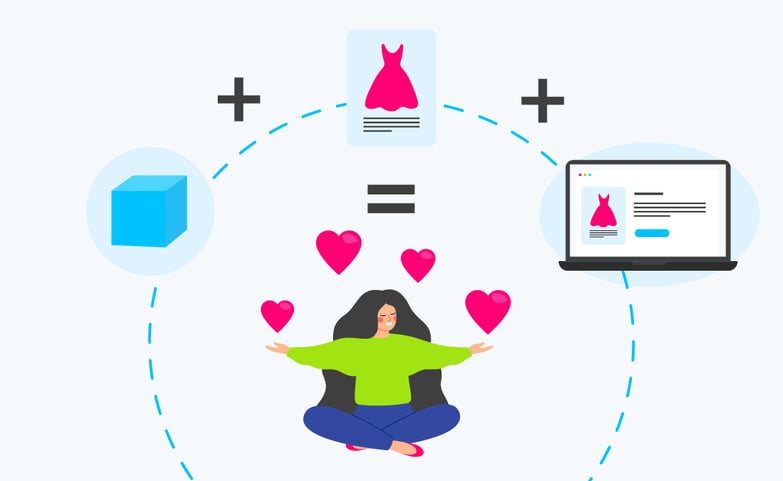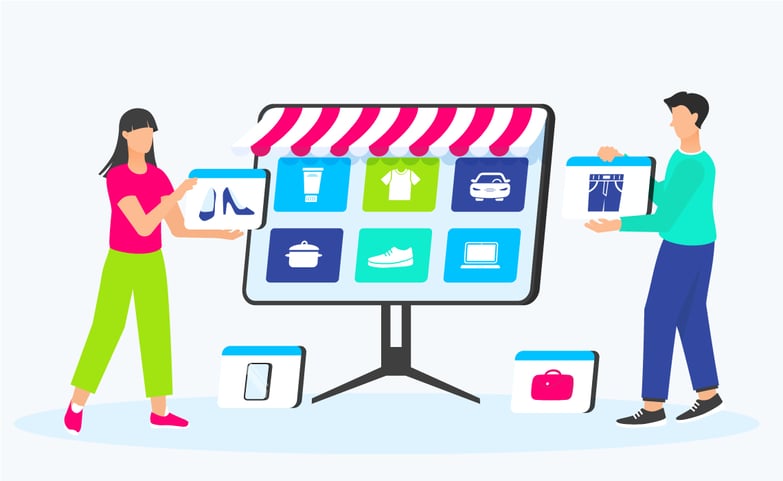Three factors are needed to encourage customers to make a purchase: a good product at a reasonable price - but above all an outstanding buying experience. Companies that understand this and integrate it across all sales channels are rewarded with more traffic, higher conversion rates and reduced cart abandonment. According to Gartner, they are growing twice as fast as their competitors. You may have heard the term “experience economy” before, but have you implemented it in your sales process yet?
Customers can be a contradictory species. On the one hand, they are constantly under time constraints. They generally prefer self-service — in the store around the corner or when buying online. That’s why ecommerce platforms must offer self-service and express delivery or same-day delivery options. Delivery services are outdoing each other with faster response times. In many ways, time is the new currency.
However, time is not the measure of all things. After all, time is relative not only for physicists but also for customers: If they feel their time is well invested, they suddenly no longer feel the urge to hurry. How else could it be explained that a latte macchiato prepared by a barista and enjoyed in peace is worth much more to many customers than a simple coffee with milk? So, it's not so much a matter of cutting time but of filling it in relevant ways — with purposeful actions, entertainment, enjoyment or emotion.
Customers are loyal to experience, not brands
According to current market research, around six out of seven customers are prepared to pay more for a better shopping experience. Brand loyalty has now been replaced by "experience loyalty". This is precisely why customers return more often, and why they are more willing to recommend a brand to others.
But this does not only apply to the B2C market. The B2B sector now values a seamless buying process and a pleasant business climate as highly as product quality and low prices. In fact, about 80% of B2B customers say they would switch to another supplier if it offered them a more personalized shopping experience, and one in two would pay more to find what they are looking for faster.
Buying experience vs. customer experience
The buying experience is a game changer that significantly reshapes marketplace dynamics. But what does it mean? — buying experience is often mistaken for another buzzword from the experience economy: customer experience or CX for short. The latter refers to the people making purchases, while the former describes the entire shopping process.
The main difference is that CX, by definition, refers to existing customers. The buying experience focuses primarily on prospective buyers. This is where it's determined whether a buying process is created or whether it remains a mere interest. Frictions in the process, inconsistent or unavailable information and poor personalization easily lead to cart abandonment and prevent customers from ever coming back. There are no second chances for a (good) first impression.
How is an excellent buying experience created?
But what goes into creating a frictionless and positive buying experience? Here are some keywords to consider:
- Personalization: Customers want to be perceived as humans. Brands should help them find exactly the right products for their needs — preferably also for those they‘re not even aware of yet.
- Relevance: Most customers are willing to engage in the buying process. But they don't want to waste their time giving redundant information or going through unnecessary processes.
- Contextualization: Interactions must be precisely tailored to each customer’s requirements and fit the context of each stage of the buying process.To make a purchase decision, the customer needs the right information, at the right time.
- Cross-channel consistency: Anyone who receives different information online than in a retail store or on the phone will be confused or even annoyed. Inconsistent content requires follow-up questions and causes friction.
- Pleasant surprises: Satisfaction is good; excitement is even better. New customers are won by those who exceed expectations. Good sales teams lead customers to the product they always wanted — they just haven't realized it yet.
More of the same is not necessarily better
The first practical idea for a personalized online sales approach emerged more than 20 years ago, when Greg Linden, Brent Smith and Jeremy York designed what would later become the "Recommendation Engine" for Amazon. Their recommendations, however, were fairly generic. They were based on the principle of "more of the same." If you had a new electric mountain bike in your shopping cart, you probably didn't need another one.
Conventional recommendation engines today still work with a limited number of parameters. They recommend products to customers that they have already bought or looked at. Sometimes they also simply recommend bestsellers — or items that need to be removed from stock. What the potential buyer actually wants doesn't seem to matter to the online store — a good buying experience looks different. To address customer needs, brands need to provide more rich, relevant and consistent information.
PIM — pening the door to a positive first impression and a seamless buying experience
The key to a successful buying experience lies in seamlessly integrating product data with information that customers provide about themselves - across a wide range of channels. A salesperson who understands their customer and knows that they like to go trail running in the Chiemgau Alps, for instance, will address this during the buyer's journey. To score points in modern omnichannel retailing with an excellent buying experience, you need consistent product data across all channels.
This means that the same product information must be available in the web store as it is in the physical store or even on the phone with customer service. Product Information Management (PIM) already provides this today. A PIM system is the central location for all product data along the entire value chain, from the ERP system to the online store. It, therefore, applies to everything that happens before and after a customer interaction: If the PIM is integrated with the ERP or a Merchandise Management System (MMS), it knows, for example, whether a product is available before it's displayed on the results page after a corresponding search query in the web store. To be easily found by customers, product data should be optimized for search engines (SEO) in the PIM. This simplifies ongoing operations and generates traffic, especially when online stores receive data from the manufacturer's PIM.
Content is king when the customer is king
A high-functioning PIM acts as a catalyst for personalization and contextualization by integrating even basic customer information with much more detailed and modularly stored product information. A great PIM is capable of adapting product information in real-time to different users in different contexts and channels.
In addition to product information, PIM can and should include customer and contextual content. Often, however, product pages listing purchase recommendations are geared too closely to broad categories of interest. The classic "because they have already bought x..." or "other customers bought y..." isn't a very useful personalization strategy. An effective product page doesn't show customers the items they've already added to their cart, but the ones that could end up there. If that sounds a bit cryptic, here's an example: a customer buys a pair of trekking poles. Now, instead of recommending more pairs of trekking poles that he doesn't need, it would be more relevant to show him a pair of sports sunglasses that he could use on his next summer hike.
Those who base recommendations solely on purchase history are missing opportunities. That's why you should offer customers what they don't yet have but want, not what they already own.
Customers who are engaged in this way with your brand, online store or products are also more likely to provide information about their interests, preferences and specific needs. These are ideal conditions for tailoring the next shopping experience more precisely to your customers‘ needs.
However, the first step must be taken by the supplier and not the customer. Organizations should approach the sales process with an "experience-first" mentality. Every person is a customer at some point. So, every brand needs to know their audience and consider what their prospects actually need to become regular customers themselves.



